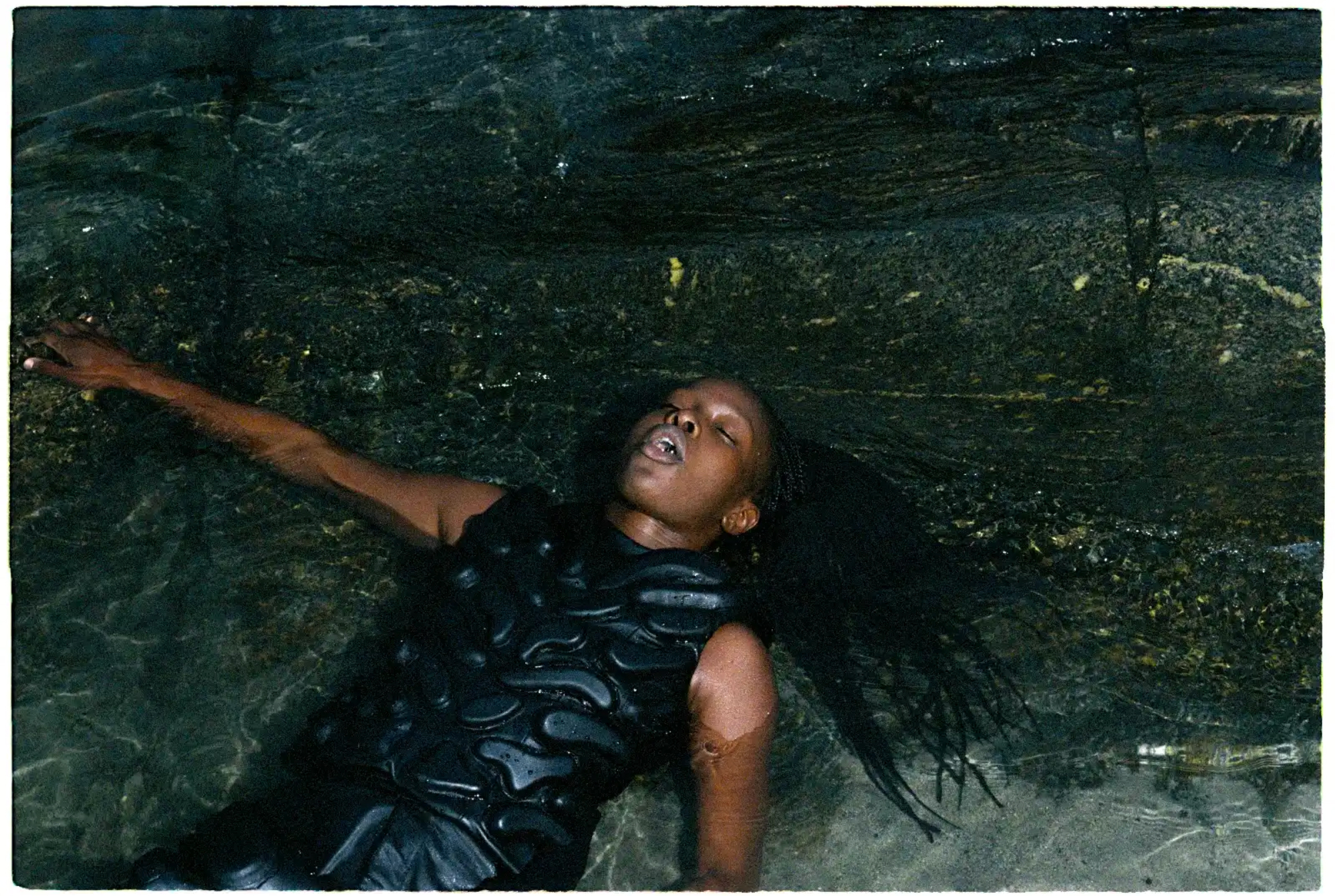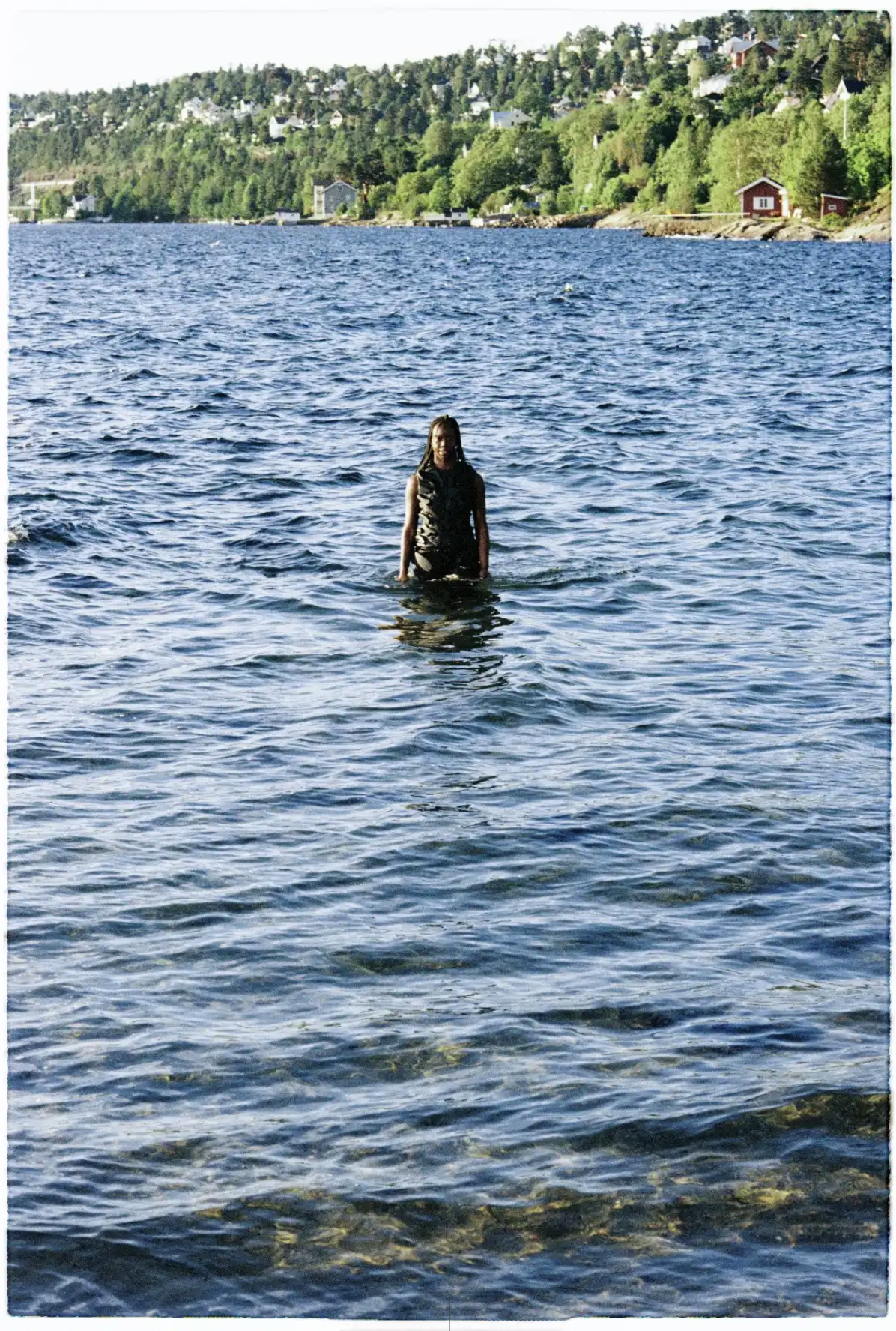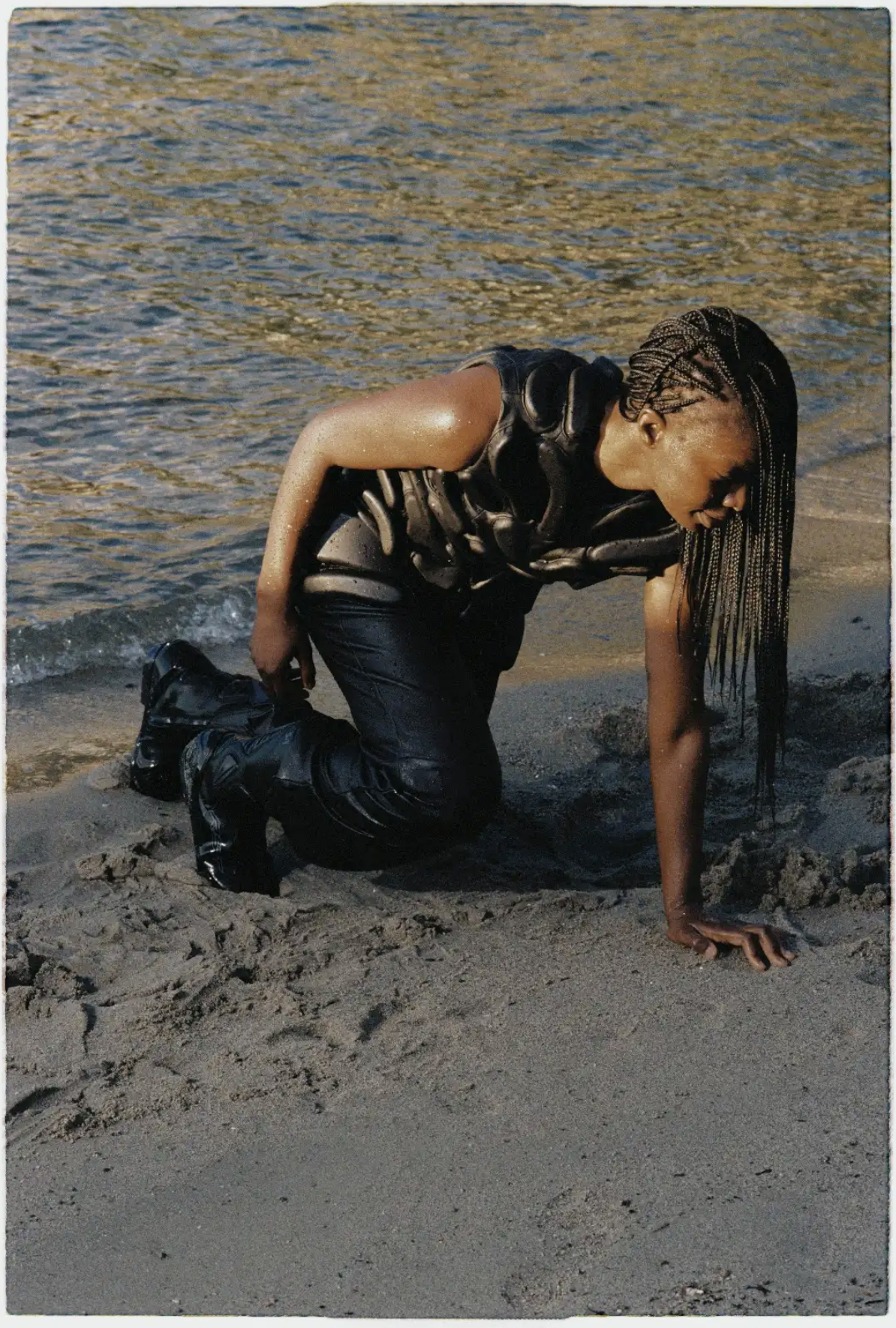Echoes Of Silence



Concept and Choreography: Amie Mbye
Performer: Amie Mbye
Costume: Chris Lee
Sound Composer: Oscar Taylor
Sound Technician: Nikhil Vettukattil
Vocal Coach: Noela Covelo Velasco
Dramaturgical Guidance: Nadia Beugré, Deise Nunes Faria
Artistic Dialogue Partners: Solveig Styve Holte, Louis Schou-Hansen, Deise Nunes Faria
Producer: Amisha Kumra
Photo and Video Documentation: Dev Dhunsi
Co-production: TrAp, Africa Moment, Kaay Fecc
Supported by: Arts Council Norway
Additional Credits: Ibrahima Diouf, Baba Sy
Echoes of Silence is a site-specific performance ritual solo performance by Amie Mbye that explores the Mediterranean as a body of memory, resistance, and transformation. Rooted in hydrofeminist choreographic practice, the work challenges Eurocentric and patriarchal narratives of the term echo, reframing it as a sonic and embodied language of protest, cleansing, and resonance.
Set across four coastlines—Oslo, Barcelona, Tangier, and Dakar—the performance activates each site as a living archive. The audience is not separate from the scene, but part of the shifting landscape. Each iteration becomes a pulsating frequency, inviting presence, participation, and witness.
![]()
The Performance of Echo
In Echoes of Silence, Echo is no longer a passive reverberation or mythic remnant. She returns in a new form, a different figure, emerging from another time. Draped in movement and voice, she speaks from the fractures of the present—where history seeps into the now.
This is not the Echo of classical myth or patriarchal silence. This Echo rebukes national romanticism, mythological erasure, and colonial science fiction. She sees and is seen. She gathers and carries. She infiltrates and confronts the reversed frequencies of the Mediterranean’s hidden dead—its drowned, its displaced, its unnamed.
She manifests as an ambivalent force—ancient yet viral, fluid yet sharp. Her presence spreads through mass movement, through alarming and fearless frequencies. Echo is not an echo of the past, but a signal of the future—resonating through bodies, technologies, and coastlines.
On today’s global digital platforms, Echo takes on a new historical stage. She acquires her own circuitry. Patterns emerge—echo-forces, echo-chambers, echo-resistances. Through this echo-technology, we begin to see how many we are, how alike, how fragile.
She disrupts the silence of statistics. She breaks the spell of invisibility not through data, but through vibration—not through reporting, but through ritual. We summon her from the sediment of cultural detritus. The mountain nymph rises again, placed upon the body of the zeitgeist.
Echoes of Silence is not merely a performance—it is a ritual transmission. A call. A return. Each gesture is a pulse. Each sound a trace. Echo becomes a body—a protest—an invocation. She does not disappear. She insists. She has arrived. And she will not be silenced.
![]()
![]()
Set across four coastlines—Oslo, Barcelona, Tangier, and Dakar—the performance activates each site as a living archive. The audience is not separate from the scene, but part of the shifting landscape. Each iteration becomes a pulsating frequency, inviting presence, participation, and witness.

The Performance of Echo
In Echoes of Silence, Echo is no longer a passive reverberation or mythic remnant. She returns in a new form, a different figure, emerging from another time. Draped in movement and voice, she speaks from the fractures of the present—where history seeps into the now.
This is not the Echo of classical myth or patriarchal silence. This Echo rebukes national romanticism, mythological erasure, and colonial science fiction. She sees and is seen. She gathers and carries. She infiltrates and confronts the reversed frequencies of the Mediterranean’s hidden dead—its drowned, its displaced, its unnamed.
She manifests as an ambivalent force—ancient yet viral, fluid yet sharp. Her presence spreads through mass movement, through alarming and fearless frequencies. Echo is not an echo of the past, but a signal of the future—resonating through bodies, technologies, and coastlines.
On today’s global digital platforms, Echo takes on a new historical stage. She acquires her own circuitry. Patterns emerge—echo-forces, echo-chambers, echo-resistances. Through this echo-technology, we begin to see how many we are, how alike, how fragile.
She disrupts the silence of statistics. She breaks the spell of invisibility not through data, but through vibration—not through reporting, but through ritual. We summon her from the sediment of cultural detritus. The mountain nymph rises again, placed upon the body of the zeitgeist.
Echoes of Silence is not merely a performance—it is a ritual transmission. A call. A return. Each gesture is a pulse. Each sound a trace. Echo becomes a body—a protest—an invocation. She does not disappear. She insists. She has arrived. And she will not be silenced.

